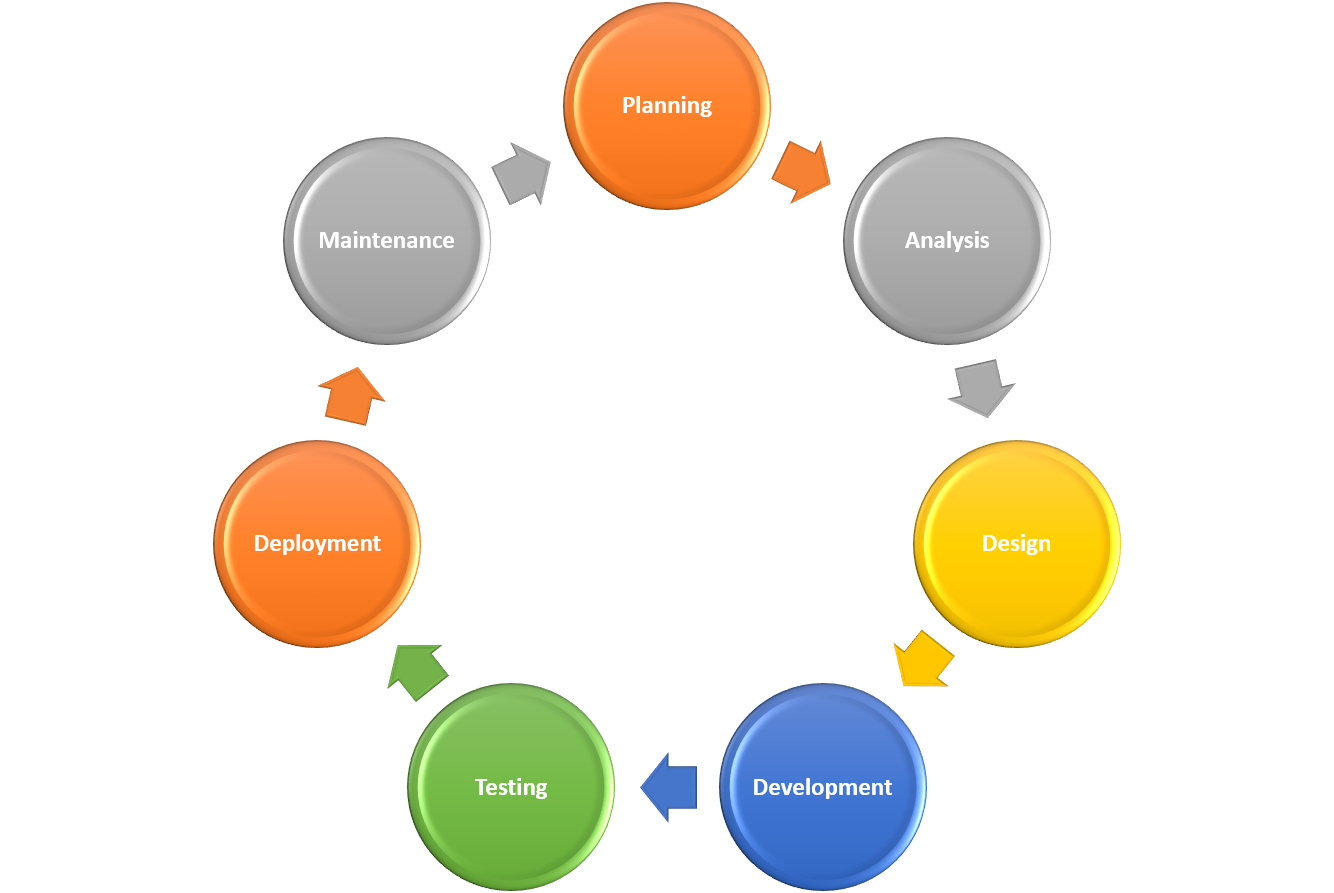1. Project Initiation:
a. Project Charter: This document outlines the project’s purpose, objectives, scope, stakeholders, and high-level budget and timeline.
b. Stakeholder Analysis: Identify all stakeholders and their roles, responsibilities, and expectations.
2. Project Planning:
a. Project Plan: Develop a detailed plan that includes tasks, milestones, timelines, and resource allocation. Use project management tools like Gantt charts or project management software.
b. Scope Statement: Define the project’s scope, including features, functionalities, and limitations.
c. Risk Management Plan: Identify potential risks and create a plan for risk mitigation and contingency.
d. Communication Plan: Define how team members and stakeholders will communicate, including the frequency and channels.
e. Resource Plan: Outline the resources required, including human resources, tools, and technologies.
f. Budget: Create a detailed budget, including cost estimates for various project components.
3. Design and Development:

a. Technical Specification: Document the technical requirements and specifications for the web project.
b. Wireframes and Mockups: Create visual representations of the website’s layout and design.
c. Development Plan: Detail the development process, including coding standards and guidelines.
d. Test Plan: Define the testing strategy and criteria for the project.
4. Implementation:
a. Deployment Plan: Outline the steps and timeline for deploying the website to the production environment.
b. User Acceptance Testing (UAT): Document UAT results and obtain client/stakeholder sign-off.
c. Training Plan: If needed, create a plan for training end-users or administrators.
5. Monitoring and Controlling:

a. Progress Reports: Regularly update stakeholders on project progress and any deviations from the plan.
b. Issue and Change Logs: Document and manage any issues or changes that arise during the project.
c. Quality Assurance: Monitor the quality of deliverables and ensure they meet the defined standards.
6. Closure:
a. Project Closure Report: Summarize the project’s outcomes, including lessons learned and recommendations for future projects.
b. Client Sign-off: Obtain formal acceptance and sign-off from the client/stakeholders.
c. Handover Documentation: Provide documentation and training materials to the client for ongoing maintenance and support.
7. Post-Implementation Support:
a. Maintenance Plan: If applicable, outline the ongoing maintenance and support plan.
b. Feedback Analysis: Collect and analyze feedback from end-users and stakeholders for future improvements
Throughout the project, maintain clear and organized documentation to ensure transparency and effective communication among team members and stakeholders. Project management software can be very helpful in tracking tasks, timelines, and project-related documents. Adapt these steps and documents as needed to fit the specific requirements and complexity of your web development project.


